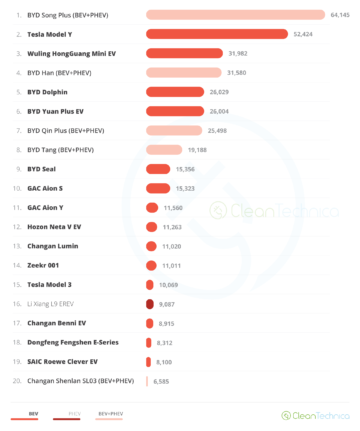US President Joe Biden proposed spending $15 billion to install 500,000 EV charging points across America. In the draft infrastructure bill that has emerged after weeks of haggling and horse trading in the nation’s capitol, that proposal has been cut in half. Since we all know politics is mostly about behind the scenes arm twisting, maybe that’s what the Biden team wanted in the first place. Who knows?
So what now? Jessika Trancik, an MIT professor who studies EV charging, tells Autoblog, “If there’s half the funding, you have to be twice as strategic and twice as deliberate.” She says that where those new chargers go should be based on computer models that predict where they will be most needed — but different types of chargers should go in different locations.
Obviously, DC fast chargers, which can cost between $40,000 and $100,000 each, should be installed along major travel corridors where drivers want to charge and get back on the road as soon as possible. Level 2 chargers that operate on 240 volts are much cheaper at around $2,000 each. Trancik says they can be used effectively at much lower costs in areas where people stay for longer periods of time.
One target area is apartment and condominium buildings where occupants may have no access to an EV charger otherwise. Rural areas should also be prime targets for EV chargers so their residents are able to drive electric cars.
The new infrastructure bill makes no mention of education, but there are still plenty of misconceptions about electric cars that need to be addressed. The habits of the past still rule present thinking. Lots of people assume charging an EV should be done the same way we fill the tank of a conventional car — drive to a service area, park, plug in, pace around for an hour or so, and then drive home. The idea that you plug in at home and wake up every morning with enough range for 2 or 3 days of normal driving is still foreign to lots of people.
Automakers are strong supporters of the push to get EV chargers installed everywhere. Surveys show that many potential EV customers are hesitant to make the switch for fear of running out of electricity with no charging station in sight. “Much of this transition is going to depend on government support, infrastructure build-out,” Ford CEO Jim Farley said during his company’s Q2 earnings call last week.
What Else Is In The Infrastructure Bill?
$7.5 billion for charging infrastructure is just a small part of the more than $1 trillion in infrastructure spending included in the proposed legislation. According to the Washington Post, there is money to repair America’s crumbling roads and bridges, $66 billion to upgrade passenger train service (the largest such investment since the creation of Amtrak nearly a half-century ago), $55 billion to improve the country’s drinking water and replace every lead pipe in America, $65 billion to expand broadband Internet access nationwide and ensure those who do have connectivity can afford their monthly payments, and $25 billion for repairs at major airports.
The Infrastructure Investment and Jobs Act includes funding to address the effects of a warming planet by reducing emissions (that part is a little fuzzy, but that’s not unusual given the bill is 2,700 pages long), $73 billion to modernize the nation’s energy grid, and $21 billion to respond to environmental concerns and advance clean energy technologies.
“It takes our aging and outdated infrastructure in this country and modernizes it, and that’s good for everybody,” says Senator Rob Portman, one of the chief architects of the legislation.
Who’s Going To Pay For All This?
Just how does Congress intend to pay for all this? Good question. The Washington Post says Republicans are adamantly opposed to rolling back any of the tax giveaways to corporations and American’s wealthiest citizens enacted in 2017. They prefer to impose new user fees whose burden would fall most heavily on people who don’t vote Republican, which of course Democrats are unwilling to do.
So the funds will come from a combination of reclaimed fund from past coronavirus aid funds and collecting unpaid taxes on cryptocurrencies. Heaven forfend that any spending should increase the budget deficit that Republicans pay no attention to when it benefits their supporters but which they abhor if it benefits ordinary Americans.
Moving Forward, Falling Behind
Joe Biden says he wants America to be a net zero country by 2050. The latest Net Zero Report from Princeton University says even with this new package, America is nowhere close to achieving that goal. Chris Greig, senior research scientist at Princeton and author of the report, tell Bloomberg Green, “That pace question is the critical issue. Doing things the way we’ve always done them, we will fail in this mission to net zero by 2050.”
The report examines two scenarios, one that relies on nuclear power to replace electricity from fossil fuels and another that assumes 100% renewable energy is available. In either case, even with environmentally supportive policies, the US only gets about halfway to achieving net-zero emissions by 2050 if it continues delivering infrastructure at the rate it does today.
The US is adding a record amount of new solar power, but it will need to install an additional 800 megawatts each week to reach net zero in 30 years, according to the report (emphasis added.) Speeding things up will require key shifts in the way the US plans and develops infrastructure projects, the authors write:
- thinking of value beyond financial returns
- using existing renewable technology while also investing in new ones
- standardizing designs for greater
- faster scalability
- greater collaboration between government, communities and capital markets
- embracing digital technology to keep the whole system running.
Already, the House is calling for amendments to the infrastructure bill, which could endanger its passage. For Chris Greig, framing the question the right way helps simplify things considerably. “Success is non-negotiable,” he says. “In 2050, we have to be net zero. A shortfall is not acceptable. When you put that lens on this challenge, it forces you to think differently.”
Maybe so, but politicians are not skilled at looking much beyond the next election or even the end of next week. Despite the horrific forest fires sweeping the world, lethal heat waves, droughts, and stronger storms, most of America’s political leaders are fixated on one thing — getting re-elected. While they pay lip service to environmental initiatives, their primary mission is making sure the needs of their major donors are met, even if that means an end to life as we know it.
The odds are stacked against doing the hard work that will be needed to address climate change in any meaningful way. Humans are quite capable of taking extraordinary measures to conduct military campaigns, not so good at taking action to protect the Earth. In the final analysis, we will tell our progeny, “Leaving you a sustainable world just wasn’t that important. Sorry about that.”

- 000
- access
- Action
- Advertise
- Airports
- All
- america
- analysis
- AREA
- ARM
- around
- authors
- behind the scenes
- biden
- Bill
- Billion
- broadband
- call
- Campaigns
- capital
- car
- cars
- ceo
- challenge
- change
- charge
- charging
- chief
- clean energy
- cleantech
- Cleantech Talk
- Climate change
- collaboration
- Collecting
- Communities
- Congress
- Connectivity
- continues
- Coronavirus
- Corporations
- Costs
- cryptocurrencies
- Customers
- delivering
- Democrats
- digital
- driving
- Earnings
- earnings call
- Education
- Election
- Electric
- electricity
- Emissions
- energy
- environmental
- EV
- Expand
- FAST
- financial
- First
- Ford
- Forward
- fossil fuels
- fund
- funding
- funds
- good
- Government
- Grid
- Guest
- Home
- House
- How
- HTTPS
- Humans
- idea
- Increase
- Infrastructure
- Internet
- investing
- investment
- IT
- Jobs
- Joe Biden
- Key
- latest
- lead
- Legislation
- Level
- Long
- major
- Making
- Military
- Mission
- MIT
- money
- net
- Pay
- payments
- People
- pipe
- planet
- Plenty
- podcast
- policies
- politics
- power
- present
- president
- president joe biden
- princeton
- projects
- proposal
- protect
- range
- renewable energy
- report
- Republicans
- research
- roads
- running
- Rural
- Rural Areas
- Senator
- small
- So
- solar
- Solar Power
- Spending
- stay
- Strategic
- studies
- support
- sustainable
- Switch
- system
- Target
- tax
- Taxes
- Technologies
- Technology
- tells
- Thinking
- time
- Trading
- travel
- university
- us
- value
- Vote
- Water
- waves
- week
- WHO
- Work
- world
- years
- zero






